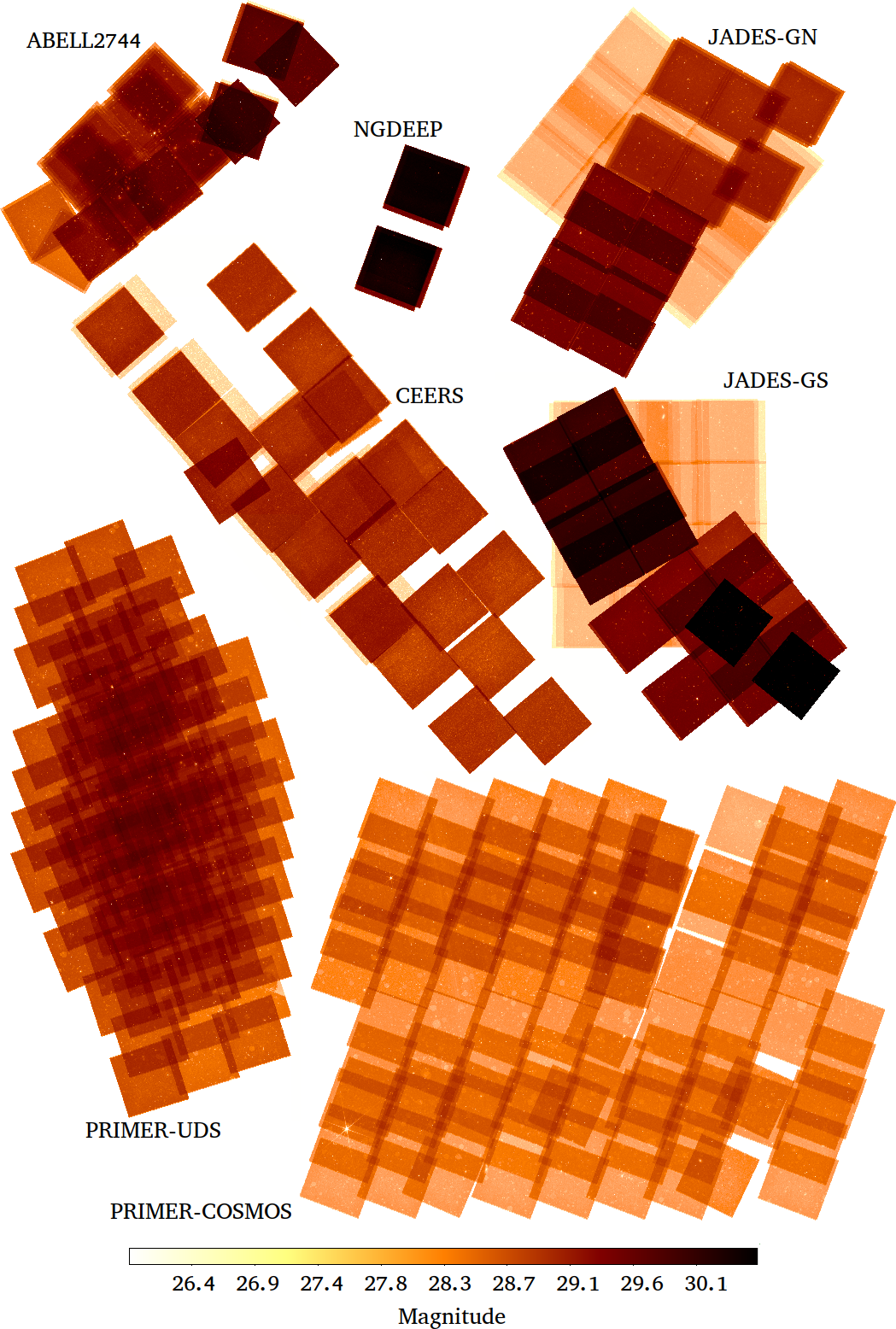
We present a set of photometric catalogs primarily aimed at providing the community with a comprehensive database for the study of galaxy populations in the high-redshift Universe. The set gathers data from eight JWST NIRCam observational programs, targeting the Abell 2744 (GLASS-JWST, UNCOVER, DDT2756 and GO3990), EGS (CEERS), COSMOS and UDS (PRIMER), and GOODS North and South (JADES and NGDEEP) deep fields, for a total area of ≃0.2 sq. degrees.
Photometric estimates are obtained by means of well-established techniques, including tailored improvements designed to enhance the performance on the specific dataset. We also include new measurements from HST archival data, thus collecting 16 bands spanning from 0.44 to 4.44 μm.
A grand total of ∼530 thousand sources is detected on stacks of NIRCam 3.56 and 4.44 μm mosaics. We also provide photometric redshift estimates, statistically validated against a large set of robust spectroscopic data.
The catalogs are publicly available from here.
It also possible to visualize and explore the catalogs via the Cosmological Surveys Rainbow Database.
If you use these catalogs for your science, please cite Merlin et al. 2024. If you find any issue in the catalogs or need assistance, please contact emiliano.merlin@inaf.it. If you want to be updated about new releases, please send an email to emiliano.merlin@inaf.it with subject “Add me to ASTRODEEP-JWST mailing list”.
Several catalogs for each field are available, among which one (named “optap”-catalog) is obtained assigning to each source the colors computed in its “optimal” aperture, and is suggested as the reference one. The catalogs are published in FITS format, and come with a README file that explains the meaning and format of the columns.All catalogs first list a set of columns indicating the unique identifiers of the detected objects, their position in equatorial coordinates and in pixels, and some values from the SExtractor detection run on the F356W+F444W stack mosaics. Then, some measures obtained with aphot again on the detection stack: the major semi-axis of the elliptical isophote, the ellipticity and the position angle, and the Kron radius (in pixels). The total fluxes in the 16 photometric bands are then given, followed by the corresponding 16 uncertainties (all in uJy units). Finally, the last column gives the flag. In the “optap”-catalog the value of the “optimal” aperture is also given (in arcseconds). We separately release a set of photometric redshifts catalogs estimated on the “optap”-catalog with local background subtraction. For each source they list the ID, RA and Dec, the spectrscopic redshift when available, four estimates of the photometric redshift obtained with zphot and EAzY, and the flag assigned to the source as reported also in the “optap”-catalog, with the additional indication of a negative sign for the sources lacking information in the bands necessary to identify the Lyman break.
